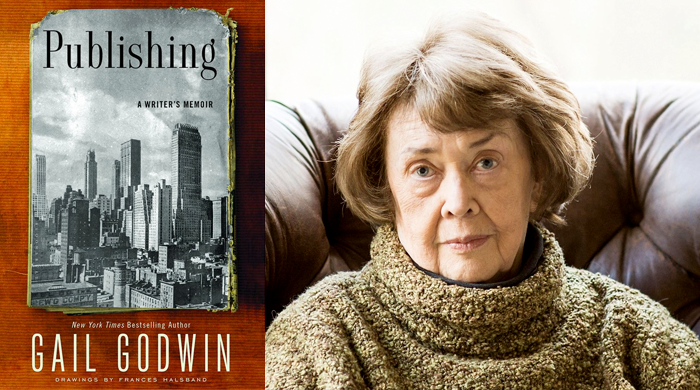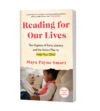Gail Godwin’s “Publishing: A Writer’s Memoir” is a graceful meditation on the author’s years aspiring to publication and her subsequent decades navigating an increasingly cutthroat, capricious industry. Wisdom, perseverance and faith lurk amid the lines of her spare, droll writing, making this an understated yet inspiring read.
Godwin exemplifies a keep-on-keeping-on ethos in sharp contrast to writers like Harper Lee, whose concerns about topping past popularity prevented her from continuing to create new work. From a sales perspective, Godwin’s career peaked in 1982 with the publication of “A Mother and Two Daughters,” which sold more than 1 million copies and was a National Book Award finalist. But she’s still writing today and has published 14 fiction and nonfiction books since.
“Publishing” opens at the University of North Carolina in 1958 with young Godwin presenting five pages of her novel-in-progress to scouts for Alfred A. Knopf. The pages were rejected and Godwin muses: “As I slogged along inside my bubble of failure beneath the Great American Novelist’s ancient trees, it struck me for the first time that I was nothing new, just the latest model of a young person hungry for success, and possibly one of the very many who was not going to make it.”
Of course, the reader knows that Godwin did indeed make it. She went on to publish more than a dozen novels, becoming a National Book Award finalist three times. With a light pen, Godwin uses “Publishing” to offer some insight into how she did it. She highlights deep-seated personal ambition, the role modeling of her writer mother, and the encouragement of teachers and friends. She colors it all with a bit of drama and no shortage of good humor.
The quick read, illustrated with pen and ink drawings by architect Frances Halsband, offers helpful perspective for aspiring writers, all of whom are likely to meet much frustration and rejection along their own publishing paths. The lesson Godwin imparts by sharing her story is that it is how you greet the challenges over the long haul that matters.
For years, Godwin battled insecurity, humiliating failures, and the sense that time was running out on her writing career. Still, she simply kept writing, learning, connecting. “I wrote the next chapter of my remote novel that wouldn’t sell enough copies, and trudged home under the starlit canopy of obscurity,” she wrote of her response to yet another rejection.
She learned this tenacity in part through the example of her mother, who wrote plays during her own studies at Chapel Hill, sold love stories to pulp magazines when rearing Godwin, and wrote novels under a penname while raising three younger children from a later marriage. Some of the most endearing parts of the book feature Godwin and her mother making up stories together, acting out scenes based on people from their church and reading rejection letters her mother received from publishers. They made a duet out of a particularly vexing one:
“Writes like the angels!” (soprano)
“With notes of monstrous tedium!” (alto)
“Merry Christmas to you!” (soprano)
“If you pare the fat!” (alto)
This same sense of levity and steadfastness served Godwin well after she finally won her first book deal in 1968. Her tangled publishing journey since then has included seven different editors and as many publishers, thanks to untimely deaths, industry upheavals, and intractable egos. With great candor, she writes of coming to understand the fear plaguing publishing today and of learning to brace herself for calls announcing the firing of her editor or publisher or both. She also sheds welcome septuagenarian perspective on questions of what’s new and what’s not in today’s publishing environment.
“Publishing as a family business, as a literate, gentlemanly occupation, had already taken on the sepia hues of nostalgia, but the new publishing, whatever that creature would turn out to be, hadn’t reared its head yet,” she writes of the early days of her publishing career. “Not one of the seven houses that wanted to publish ‘A Mother and Two Daughters’–eight, counting Knopf, who reserved the right to match the final bidder–stands by itself today. Six of those bidders are now subsumed into two of the ‘big five’ publishing corporations.”
Throughout “Publishing,” readers can gain a glimpse into the deals, publicity campaigns and industry maneuverings that bring books to the public. One section describes how a book meant to be titled “The Red Nun” wound up with a bodice-ripper-evoking misnomer “Unfinished Desires.” Aspiring writers can take heart at Godwin’s evidence that frustration, rejection and adversity are just a part of the journey–even for some of the most successful writers.
If this review resonates with you, I bet you’ll enjoy my newsletter. I regularly send bookish news and notes out to more than 1,000 readers. Sign up here.


